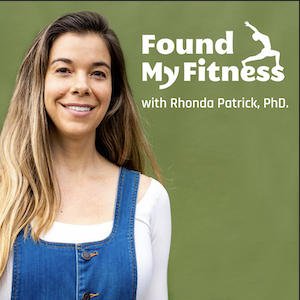The strong correlation of education with telomere health | Elissa Epel
Get the full length version of this episode as a podcast.
This episode will make a great companion for a long drive.
The BDNF Protocol Guide
An essential checklist for cognitive longevity — filled with specific exercise, heat stress, and omega-3 protocols for boosting BDNF. Enter your email, and we'll deliver it straight to your inbox.
A wide variety of lifestyle and demographic factors, including socioeconomic status, race, sex, and education, influence telomere length and, ultimately, lifespan. These factors shape telomere length at birth and have the potential to create a healthy – or unhealthy – trajectory of aging. One of the most influential factors is education level, which is correlated with longer telomere length. In this clip, Dr. Elissa Epel describes how education affected the telomere length of the babies of low-income women.
Elissa: Yeah, the education...the SES effect is interesting. It's there, inconsistently, small effect. What shows up the most is education and I think that... we even found...
Rhonda: So the more educated, the longer the telomeres or?
Elissa: Yes, exactly, positive correlation. My colleague, Janet Wojcicki, found that in a low-income sample of Hispanic women, they're all pregnant, those who graduated high school had babies with longer telomeres in their cord blood. But those who did not graduate high school had babies with shorter telomere length. So we couldn't figure out anything that could explain, the covariance, you know, everything we could and they are all low income. So the education is probably filtering in so many different ways of promoting better health.
Rhonda: You’re making me feel good about my Ph.D.
Distinctive structures comprised of short, repetitive sequences of DNA located on the ends of chromosomes. Telomeres form a protective “cap” – a sort of disposable buffer that gradually shortens with age – that prevents chromosomes from losing genes or sticking to other chromosomes during cell division. When the telomeres on a cell’s chromosomes get too short, the chromosome reaches a “critical length,” and the cell stops dividing (senescence) or dies (apoptosis). Telomeres are replenished by the enzyme telomerase, a reverse transcriptase.
Member only extras:
Learn more about the advantages of a premium membership by clicking below.
Hear new content from Rhonda on The Aliquot, our member's only podcast

Listen in on our regularly curated interview segments called "Aliquots" released every week on our premium podcast The Aliquot. Aliquots come in two flavors: features and mashups.
- Hours of deep dive on topics like fasting, sauna, child development surfaced from our enormous collection of members-only Q&A episodes.
- Important conversational highlights from our interviews with extra commentary and value. Short but salient.
Telomeres News
- Hyperbaric oxygen therapy reverses aspects of the cellular aging process in older adults, boosting immune cell function.
- Hyperbaric oxygen trial discovered a lengthening of up to 38% of the telomeres, decrease of up to 37% in senescent cells in certain cell populations
- Removing senescent cardiac muscle cells from the hearts of aged mice, both genetically and using drugs, reduces hypertrophy and fibrosis in aged heart
- Aerobic exercise (120 minutes per week) significantly lengthened telomeres, a biomarker for healthy aging, in white blood cells after 24 weeks.
- Coal plant emissions may be damaging infant DNA. Babies born during a coal plant’s operation in China had shorter telomeres.




















